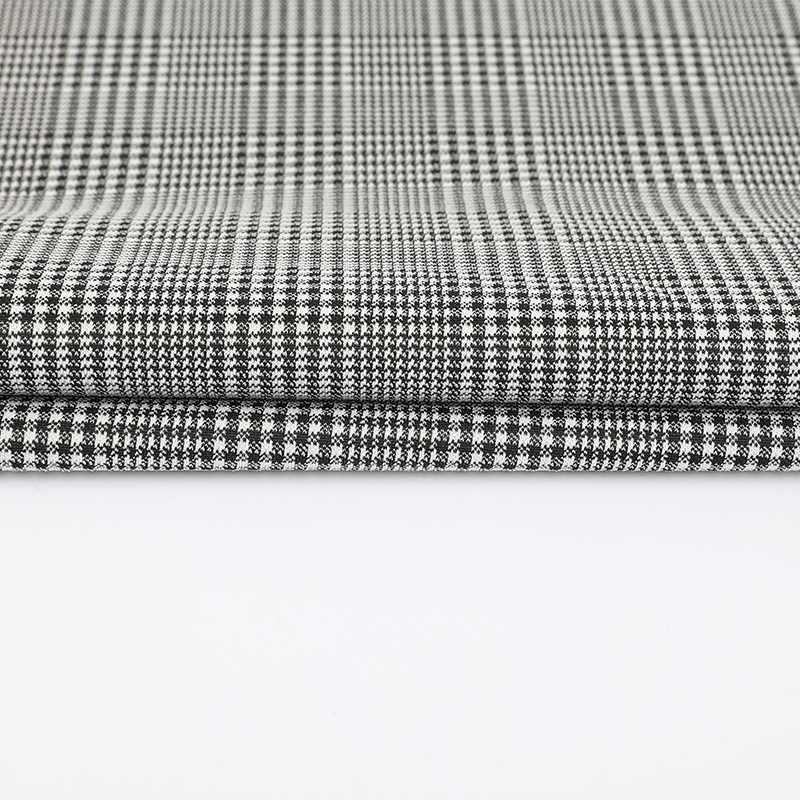Summary:Jacquard pattern fabric stands as a remarkable testament to the ingenuity of human creativity and technological advancem...
Jacquard pattern fabric stands as a remarkable testament to the ingenuity of human creativity and technological advancement in the world of textiles. What sets Jacquard pattern fabric apart from other types of textile designs is its intricate complexity, limitless design possibilities, and the revolutionary weaving technique that bears its name. To truly understand the distinctive qualities of Jacquard pattern fabric, it is essential to delve into its history, weaving process, design capabilities, and its impact on various industries.
Historical Context:
The origins of Jacquard pattern fabric can be traced back to the early 19th century, with the invention of the Jacquard loom by Joseph Marie Jacquard. Prior to this innovation, creating intricate and detailed patterns on fabric required laborious manual labor and skilled craftsmanship. The Jacquard loom, however, introduced a mechanical means of controlling individual warp threads, allowing for the automation of complex patterns. This marked a significant departure from traditional textile designs and laid the foundation for the creation of Jacquard pattern fabric.
Weaving Process:
At the heart of what distinguishes Jacquard pattern fabric lies the weaving process itself. Unlike conventional weaving methods, which involve manually manipulating warp threads to create patterns, Jacquard weaving employs a series of punched cards or, in modern times, computer programming. Each card corresponds to a specific pattern row, and as the loom progresses, these cards guide the lifting of individual warp threads, creating intricate designs with precise control. This mechanized process not only reduces the need for skilled labor but also enables the production of highly detailed and complex patterns that were previously unattainable.
Design Capabilities:
Jacquard pattern fabric's design capabilities are virtually boundless, making it a favored choice for those seeking uniqueness and sophistication. The intricate patterns and motifs achievable through Jacquard weaving range from delicate florals and geometric shapes to elaborate scenes and portraiture. The technique allows for the incorporation of multiple colors and textures within a single fabric, further enhancing its visual appeal. Designers can unleash their creativity without limitations, resulting in fabrics that tell stories, evoke emotions, and transform mere textiles into works of art.
Variety of Applications:
The versatility of Jacquard pattern fabric lends itself to a wide array of applications, from fashion to interior design and beyond. In the world of fashion, Jacquard fabrics often grace runways, adding a touch of luxury and elegance to clothing and accessories. The fabric's ability to seamlessly blend different textures and create intricate designs also makes it a popular choice for upholstery, curtains, and home decor items. In the realm of art, Jacquard pattern fabric has even found its way onto canvases as an innovative medium for contemporary artists.

Industrial and Cultural Impact:
The advent of
Jacquard pattern fabric has not only transformed the textile industry but has also left a significant mark on culture and society. The democratization of intricate designs through mechanized weaving meant that these exquisite fabrics were no longer reserved solely for the elite. This accessibility paved the way for a more diverse range of creative expression, impacting fashion trends, interior design aesthetics, and even architectural embellishments. Additionally, the development of the Jacquard loom marked a crucial milestone in the evolution of automation and set the stage for subsequent technological innovations in various industries.
Modern Advancements and Future Prospects:
As technology continues to advance, the capabilities of Jacquard pattern fabric continue to expand. Modern iterations of the Jacquard loom incorporate computerized systems that offer even greater design flexibility and precision. Innovations like smart textiles, which integrate electronic components into fabrics, showcase the adaptability of Jacquard weaving to contemporary needs. Furthermore, its eco-friendliness and potential for sustainable production methods position Jacquard pattern fabric as a frontrunner in the pursuit of more responsible and ethical textile practices.
In conclusion, what sets Jacquard pattern fabric apart from other types of textile designs is its intricate history, revolutionary weaving process, limitless design possibilities, and profound impact on various industries. Its origin as a product of human ingenuity and technological advancement has led to a transformation in the way textiles are created and appreciated. From its historical roots to its modern applications, Jacquard pattern fabric stands as a testament to the power of innovation and artistic expression, shaping the past, present, and future of the textile world.
 0571-82995618
0571-82995618 [email protected]
[email protected]
